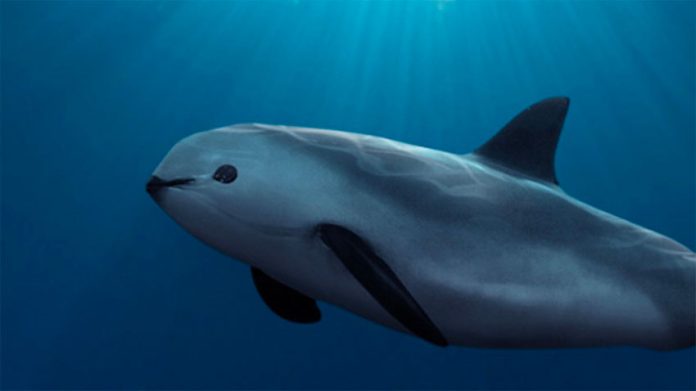A video taken by a fisherman reveals that there is one less vaquita porpoise in the upper Gulf of California.
Footage sent to the newspaper Reforma shows a lifeless vaquita in a fishing net. The sender said that the marine mammal became trapped in the net on Sunday or Monday, days when fishermen are active in the region.
It was the first time the fatal impact of fishing nets has been caught on camera. Once trapped, the vaquitas are unable to return to the surface for air and drown if not freed in time.
The fishing net in the video appears to be a No. 8, a type of net used illegally to fish for totoaba, which is prized in China for its swim bladder’s alleged medicinal and aphrodisiacal qualities.
With prices so high that the fish has been nicknamed “the cocaine of the sea,” totaba fishing has been responsible for decimating vaquita populations. Scientists from the Sea Shepherd Conservation Society reported last March that only 10 members of the species were estimated to remain in the wild.
Federal Environment Minister Víctor M. Toledo met with fishermen from the area on January 17 to discuss the problem.
Since then, fishermen have attacked conservationists and federal agents working to protect the species. On Tuesday they used net weights and Molotov cocktails to attack a Sea Shepherd boat, the second such instance of violence by area fishermen in a month.
Toledo said that the illegal fishing that prevails in the area will require intervention by various departments at all three levels of government, as well as by the fishing sector and society in general.
The situation has grown worse as criminal organizations have entered the market to cash in on the high prices fetched by the totoaba swim bladders. The problem is the worst between the towns of San Felipe, Baja California, and Golfo de Santa Clara, Sonora.
Mexico barely avoided sanctions from the Convention on International Trade in Endangered Species in August by pledging to take stronger action against illegal fishing in the vaquita’s natural habitat, but conflict between conservation efforts and local fishermen still endangers the dwindling species.
